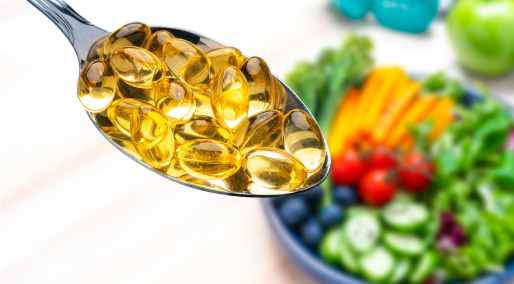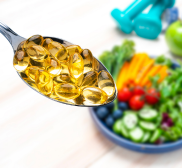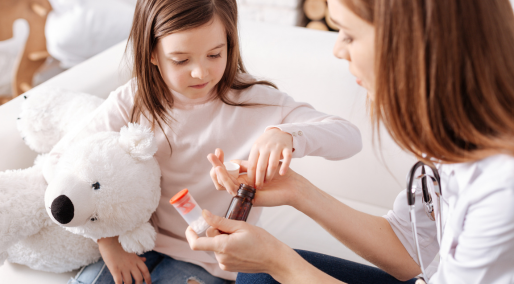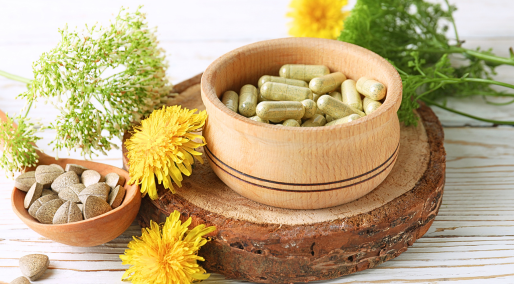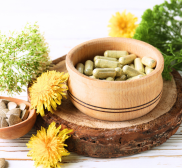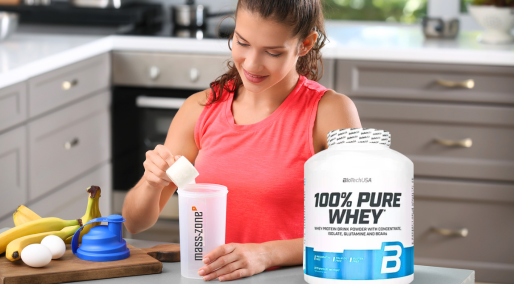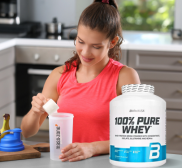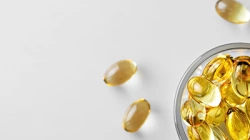.webp)
.webp)

Patryk Chodyniecki
Symptoms and causes of rheumatoid arthritis
Rheumatoid arthritis (RA) causes inflammation and pain in the joints. This happens when the immune system does not work properly and attacks the lining of the joints, called the synovium. The disease often affects the hands, knees or ankles, and usually the same joint on both sides of the body, such as both hands or both knees. But sometimes rheumatoid arthritis causes problems in other parts of the body, such as the eyes, heart, and circulatory system and/or lungs. For unknown reasons, more women than men get RA, and it usually develops in middle age. Having a family member with RA increases the likelihood of developing RA. What is the treatment of RA and the course of the disease? Do non-steroidal anti-inflammatory drugs reduce pain and slow the progression of the disease? We write about it below!
Rheumatoid arthritis and the immune system
In a healthy person, the immune system fights off invaders such as bacteria and viruses. In an autoimmune disease like RA, the immune system mistakes the body's cells for foreign invaders and releases inflammatory chemicals that attack those cells. Tn RA attacks the synovium, the lining of tissue around the joint that produces fluid that helps the joint move smoothly. The inflamed synovium becomes thicker and makes the joint area painful and tender and looks red and swollen, and it may be difficult to move the joint. Scientists aren't sure why some people develop RA. They believe that these individuals may have certain genes that are activated by a trigger in the environment, such as a virus or bacteria, physical or emotional stress, or some other external factor, which may interfere with RA treatment.
Symptoms and course of the disease
In the early stages, people with RA may not see redness or swelling in their joints, but they may feel tenderness and pain.
These symptoms are clues to RA:
The main symptoms of RA are joint pain and stiffness. Before these symptoms occur, a person may experience early warning signs. Some of these early warning signs relate to a person's overall well-being, while others relate to the joints. Symptoms that affect the joints are more likely to indicate RA, especially if more than one joint or both sides of the body are affected. Spotting these warning signs can help people seek treatment as soon as possible. Early warning signs of RA include:
1. Fatigue - prior to any other symptoms, a person with RA may feel very tired and lack energy.
Feeling tired can affect:
-
daily activity
-
relationships
-
sex drive
-
productivity at work
Feeling tired can be caused by your body's response to arthritis.
2. Mild fever - inflammation associated with RA can cause malaise and fever. A slightly elevated temperature is an early sign that sometimes accompanies fatigue. May precede any noticeable effects in the body.
3. Weight loss - The third early warning sign of RA is unexplained weight loss, which is probably an indirect result of inflammation. When someone feels feverish and tired, they may lose their appetite, which may result in weight loss.
4. Stiffness - another early sign of RA is joint stiffness. Stiffness can occur in one or two small joints, often in the fingers. It may come on slowly, but it may last for several days. In addition to stiffness that affects specific joints, an early sign of RA may be a general feeling of stiffness in the body. This type of stiffness usually affects people after a long period of immobility. This symptom is the cause of the morning stiffness that is characteristic of RA patients.
5. Sensitivity - A typical early symptom of RA is joint tenderness, which affects the hands and feet. In hands, the joint in the middle and at the base of the fingers may be tender when pressed or moved. In the feet, the joints at the base of the toes may be tender. This soreness can cause people to walk on their heels or lift their toes when walking.
6. Joint pain - Joint pain in the fingers, wrists and feet is a sign of RA. Inflammation makes the lining of the joint thicker and also causes extra synovial fluid to be produced. Both of these factors put pressure on the capsule surrounding the joint and irritate the nerve endings it contains, causing pain.
7. Swollen joints - a typical sign of RA is swollen joints of the hands and feet. Joint swelling is usually more noticeable as RA progresses, but mild swelling can be an early sign.
8. Reddening of the joints - arthritis can make them look red. Discoloration of the skin around the joints of the hands and feet is a sign of RA. Redness occurs because inflammation causes blood vessels in the surrounding skin to dilate. Wider vessels allow more blood to flow to this area, giving the skin a red appearance.
9. Heat - Joint heat is caused by inflammation and may occur before redness or swelling occurs. This could be an early sign of RA.
10. Numbness and tingling - Numbness and tingling in the hands and feet can be early signs of RA. These symptoms are caused by inflammation in the joints, which can cause nerve compression, leading to loss of sensation.
11. Decreased range of motion - In the early stages of RA, a person may notice that they have trouble bending the wrist back and forth. As the disease progresses, joint damage can affect ligaments and tendons, making them difficult to bend and straighten.
12. Joints affected on both sides - People with RA often experience symptoms in the same joints on both sides of the body. While this symmetry is typical, not all people with the condition are affected. Many people with RA are very tired (fatigue) and some may have a low-grade fever. RA symptoms can come and go. Having lots of inflammation and other symptoms is called a flare. The flare can last for days or months.
Health Effects
- Eyes: dryness, soreness, inflammation, redness, sensitivity to light, and vision problems.
- Mouth: Gingivitis dry and inflamed, irritated or infected.
- Skin: rheumatoid nodules — small lumps under the skin over bony areas.
- Lungs: inflammation and scarring that can lead to shortness of breath and lung disease.
- Blood vessels: inflammation of the blood vessels, which can lead to damage to the nerves, skin and other organs.
- Blood: less than normal red blood cell count.
- Heart: inflammation can damage the heart muscle and surrounding area.
Painful joints also make exercise difficult which leads to weight gain. Being overweightmay increase the risk of high cholesterol, diabetes, heart disease and high blood pressure in people with RA.
Arthritis diagnosis
Getting an accurate diagnosis as soon as possible is the first step to successfully treating RA. A doctor specializing in the treatment of arthritis (a rheumatologist) is the best person to make the correct diagnosis based on the history, physical examination and laboratory tests.
Medical history: your doctor will ask about your joint symptoms (pain, tenderness, stiffness, difficulty moving), when they started, if they come and go, how severe they are, what activities make them better or worse, and whether family members have RA or another autoimmune disease.
Medical examination: the doctor will look for joint tenderness, swelling, warmth and painful or restricted movement, lumps under the skin, or low-grade fever.
Blood tests: blood tests look for inflammation and blood proteins (antibodies) associated with RA:
Indicators of inflammation are erythrocyte sedimentation rate (ESR or “sed rate”) and C-reactive protein (CRP) levels. A high ESR or CRP in conjunction with other RA clues helps to make a diagnosis.
Rheumatoid factor (RF) is an antibody found in (eventually) about 80 percent of people with RA. Antibodies to cyclic citrullinated peptides (CCPs) are found in 60 to 70 percent of people with RA. However, they can also be found in people without RA.
Imaging tests: RA can wear down the ends of the bones in the joint (erosions). X-ray, ultrasound, or MRI (magnetic resonance imaging) scans can look for erosion. If they don't show up on the first tests, it may mean that RA is in the early stages and hasn't damaged the bones yet. The imaging results can also show how well the treatment is working.
Heal
The goals of RA treatment are:
-
Stopping inflammation or reducing it to the lowest possible level,
-
Symptom relief
-
Preventing joint and organ damage
-
Improved functioning and general well-being
-
Reduced long-term complication
To achieve these goals, the doctor will use the following strategies:
Early, aggressive treatment to reduce or stop inflammation as quickly as possible. Disease-modifying drugs are then given.
Target remission or other goal - to reduce the number or absence of signs or symptoms of active inflammation.
Strict control to keep inflammation as low as possible.
Working with your doctor to ensure proper treatment is essential, but you can also take measures yourself to manage your RA and relieve pain and fatigue.
How to prevent rheumatoid arthritis?
Diet, exercise, smoking cessation and mental health are key to overall good health and controlling RA. They will also help in the treatment of rheumatoid arthritis. It is worth using the following behaviors to help your body in the course of rheumatoid arthritis:
- Healthy eating: a balanced, nutritious diet, consisting of the recommended amounts of all food groups, promotes well-being and helps maintain ;of the correct weight.
- Daily movement: Even if you don't have time to exercise, make movement part of your daily routine. Take the stairs instead of taking the elevator. Park in a spot that makes it a bit of a walk to enter the building. Take the long way to your office meeting.
- Balancing activity with rest: It's important to try to stay physically active even during a flare-up, but rest is also especially important when RA is active and the joints are painful, swollen or stiff. Rest helps reduce the inflammation and fatigue that can accompany a flare-up. Taking breaks during the day protects your joints and saves energy.
- Hot and cold treatments: Thermal treatments, such as heat pads or warm baths, work best to soothe stiff joints and tired muscles. Cold is best for acute pain and swollen joints. It can numb painful areas and reduce inflammation.
- Topical products: Creams, gels or adhesive patches can relieve joint or muscle pain. Some contain a drug you can get in a pill, and others use ingredients that irritate the nerves to distract from the pain.
- Stress reduction and complementary therapies: there are different ways to relax and let go of your pain. They include meditation, deep breathing, and thinking about the images in your mind that make you feel happy. Massage can help reduce pain, loosen up sore muscles and relieve stress or anxiety. Acupuncture is the insertion of thin needles into the body along special points to relieve pain. If you don't like needles, acupressure uses firm pressure instead.
- Supplements: studies show that curcumin/turmeric and omega-3 fish oil supplements can help treat rheumatoid arthritis pain and morning stiffness. However, before taking any supplement, talk to your doctor to discuss the side effects and how it may affect other medications you are taking.
- Positive attitudes and support system: Develop a network of friends, family members and co-workers who can provide emotional support. Take time to do things you enjoy to boost your mood, which can help ease the pain.
Risk factors
Factors that may increase the risk of rheumatoid arthritis include:
-
Your gender: women are more likely than men to develop rheumatoid arthritis.
-
Age: rheumatoid arthritis can occur at any age, but most often begins in middle age.
-
Family history: If a family member has rheumatoid arthritis, you may be at increased risk of the disease.
-
Smoking: Smoking increases your risk of developing rheumatoid arthritis, especially if you have a genetic predisposition to developing the disease. Smoking also appears to be associated with a greater severity of the disease.
-
Overweight: It seems that people who are overweight are more likely to develop rheumatoid arthritis.
Complications
Rheumatoid arthritis increases the risk of developing:
- Osteoporosis: rheumatoid arthritis itself, along with some medications used to treat rheumatoid arthritis, may increase the risk of osteoporosis – a condition that weakens bones and makes them more likely to break.
- Rheumatoid nodules: these hard tissue nodules most commonly form around pressure points such as elbows. However, these nodules can form anywhere in the body, including the heart and lungs.
- Dry eyes and mouth: people with rheumatoid arthritis are much more likely to develop Sjogren's syndrome, a disorder that reduces the amount of moisture in the eyes and mouth.
- Infections: Rheumatoid arthritis itself and many of the medications used to treat it can weaken the immune system, leading to more infections. Protect yourself with vaccinations to prevent diseases such as flu, pneumonia, shingles and COVID-19.
- Incorrect body composition: The ratio of fat to lean mass is often higher in people with rheumatoid arthritis, even in people with a normal body mass index ( BMI).
- Carpal Tunnel Syndrome: If rheumatoid arthritis affects the wrists, the inflammation can compress the nerve that supports most of the hands and fingers.
- Heart problems: rheumatoid arthritis can increase the risk of hardening and blockage of the arteries, as well as inflammation of the sac surrounding the heart.
- Lung disease: people with rheumatoid arthritis have an increased risk of inflammation and scarring of lung tissue, which can lead to progressive shortness of breath.
- Lymphoma: rheumatoid arthritis increases the risk of lymphoma, a group of blood cancers that develop in the lymphatic system.
Take advantage of the discount:
www.nhs.uk - Rheumatoid arthritis
www.mayoclinic.org - Rheumatoid arthritis - symptoms, causes
my.clevelandclinic.org - Rheumatoid arthritis
www.rheumatology.org - Rheumatoid Arthritis
Rate the text

Patryk Chodyniecki








.png)
